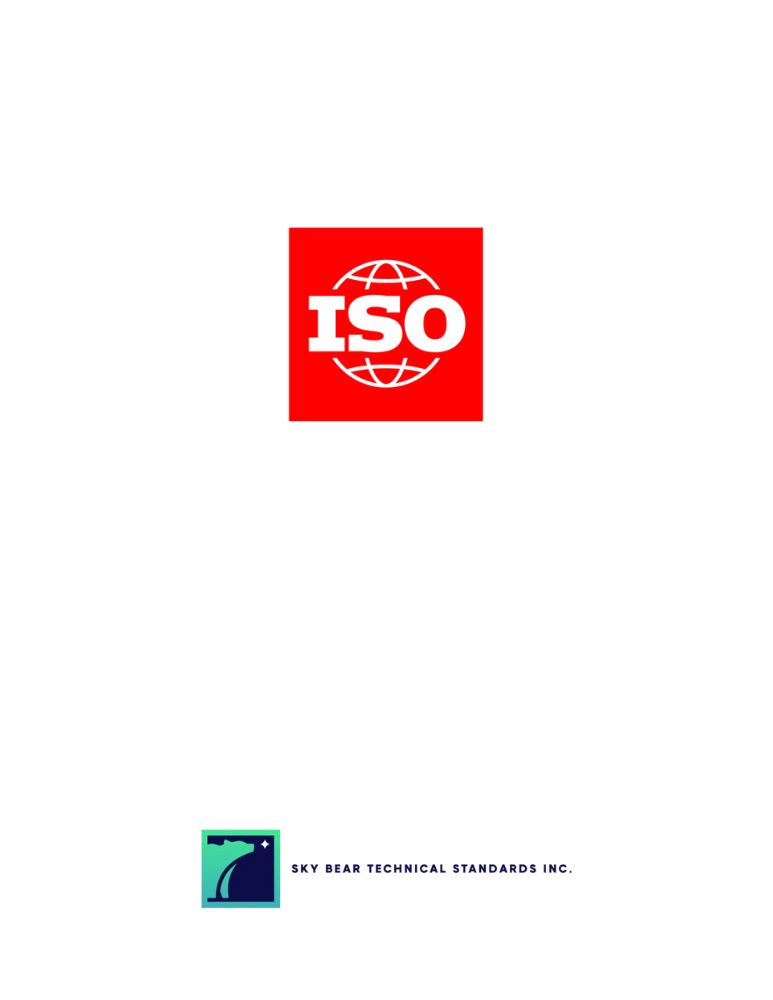Your cart is currently empty!

ISO 26304:2025
ISO 26304:2025 Welding consumables – Solid wire electrodes, tubular cored electrodes and electrode-flux combinations for submerged arc welding of high strength steels – Classification
CDN $233.00
Description
This document specifies requirements for classification of solid wire electrodes, tubular cored electrodes, and electrode-flux combinations (the all-weld metal deposits) in the as-welded condition and in the post-weld heat-treated condition for submerged arc welding of high strength steels with a minimum yield strength greater than 500 MPa or a minimum tensile strength greater than 570 MPa. One flux can be tested and classified with different electrodes. One electrode can be tested and classified with different fluxes. The solid wire electrode is also classified separately based on its chemical composition.
This document is a combined specification providing for classification utilizing a system based on the yield strength and average impact energy of 47 J for the all-weld metal, or utilizing a system based on the tensile strength and average impact energy of 27 J for the all-weld metal.
a)       Clauses, subclauses and tables which carry the suffix “system A” are applicable only to solid wire electrodes, tubular cored electrodes and the all-weld metal deposits classified to the system based on the yield strength and the average impact energy of 47 J for the all-weld metal obtained with electrode-flux combinations in accordance with this document.
b)       Clauses, subclauses and tables which carry the suffix “system B” are applicable only to solid wire electrodes, tubular cored electrodes and the all-weld metal deposits classified to the system based on the tensile strength and the average impact energy of 27 J for the all-weld metal obtained with electrode-flux combinations in accordance with this document.
c)        Clauses, subclauses and tables which do not have either the suffix “system A” or “system B” are applicable to all solid wire electrodes, tubular cored electrodes and electrode-flux combinations classified in accordance with this document.
For comparison purposes, some tables include requirements for electrodes classified in accordance with both systems, placing individual electrodes from the two systems, which are similar in composition and properties, on adjacent lines in the particular table. In a particular line of the table that is mandatory in one system, the symbol for the similar electrode from the other system is indicated in parentheses. By appropriate restriction of the formulation of a particular electrode, it is often, but not always, possible to produce an electrode that can be classified in both systems, in which case the electrode, or its packaging, can be marked with the classification in either or both systems.
For system B only, electrode flux combinations for the single-run and two-run techniques are classified on the basis of the two-run technique.
Edition
4
Published Date
2025-03-05
Status
PUBLISHED
Pages
21
Format 
Secure PDF
Secure – PDF details
- Save your file locally or view it via a web viewer
- Viewing permissions are restricted exclusively to the purchaser
- Device limits - 3
- Printing – Enabled only to print (1) copy
See more about our Environmental Commitment
Abstract
This document specifies requirements for classification of solid wire electrodes, tubular cored electrodes, and electrode-flux combinations (the all-weld metal deposits) in the as-welded condition and in the post-weld heat-treated condition for submerged arc welding of high strength steels with a minimum yield strength greater than 500 MPa or a minimum tensile strength greater than 570 MPa. One flux can be tested and classified with different electrodes. One electrode can be tested and classified with different fluxes. The solid wire electrode is also classified separately based on its chemical composition.
This document is a combined specification providing for classification utilizing a system based on the yield strength and average impact energy of 47 J for the all-weld metal, or utilizing a system based on the tensile strength and average impact energy of 27 J for the all-weld metal.
a)       Clauses, subclauses and tables which carry the suffix “system A” are applicable only to solid wire electrodes, tubular cored electrodes and the all-weld metal deposits classified to the system based on the yield strength and the average impact energy of 47 J for the all-weld metal obtained with electrode-flux combinations in accordance with this document.
b)       Clauses, subclauses and tables which carry the suffix “system B” are applicable only to solid wire electrodes, tubular cored electrodes and the all-weld metal deposits classified to the system based on the tensile strength and the average impact energy of 27 J for the all-weld metal obtained with electrode-flux combinations in accordance with this document.
c)        Clauses, subclauses and tables which do not have either the suffix “system A” or “system B” are applicable to all solid wire electrodes, tubular cored electrodes and electrode-flux combinations classified in accordance with this document.
For comparison purposes, some tables include requirements for electrodes classified in accordance with both systems, placing individual electrodes from the two systems, which are similar in composition and properties, on adjacent lines in the particular table. In a particular line of the table that is mandatory in one system, the symbol for the similar electrode from the other system is indicated in parentheses. By appropriate restriction of the formulation of a particular electrode, it is often, but not always, possible to produce an electrode that can be classified in both systems, in which case the electrode, or its packaging, can be marked with the classification in either or both systems.
For system B only, electrode flux combinations for the single-run and two-run techniques are classified on the basis of the two-run technique.
Previous Editions
Can’t find what you are looking for?
Please contact us at:
Related Documents
-

ISO 80000:2025 Quantities and units – Part 13: Information science and technology
CDN $203.00 Add to cart -

ISO 80000:2019 Quantities and units – Part 11: Characteristic numbers
CDN $312.00 Add to cart -

ISO 80004:2020 Nanotechnologies – Vocabulary – Part 3: Carbon nano-objects
CDN $76.00 Add to cart -

ISO 5078:2025 Management of terminology resources – Terminology extraction
CDN $233.00 Add to cart







